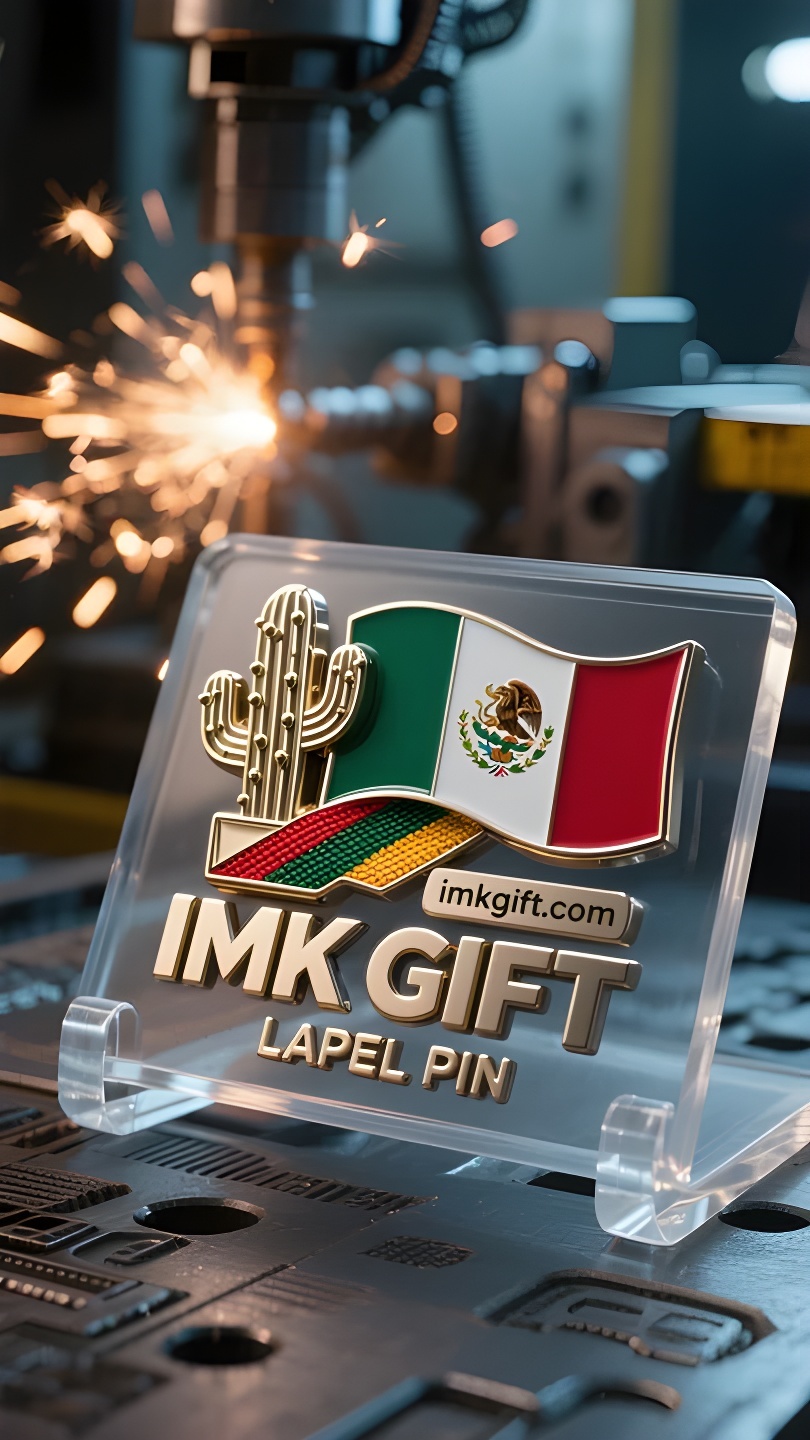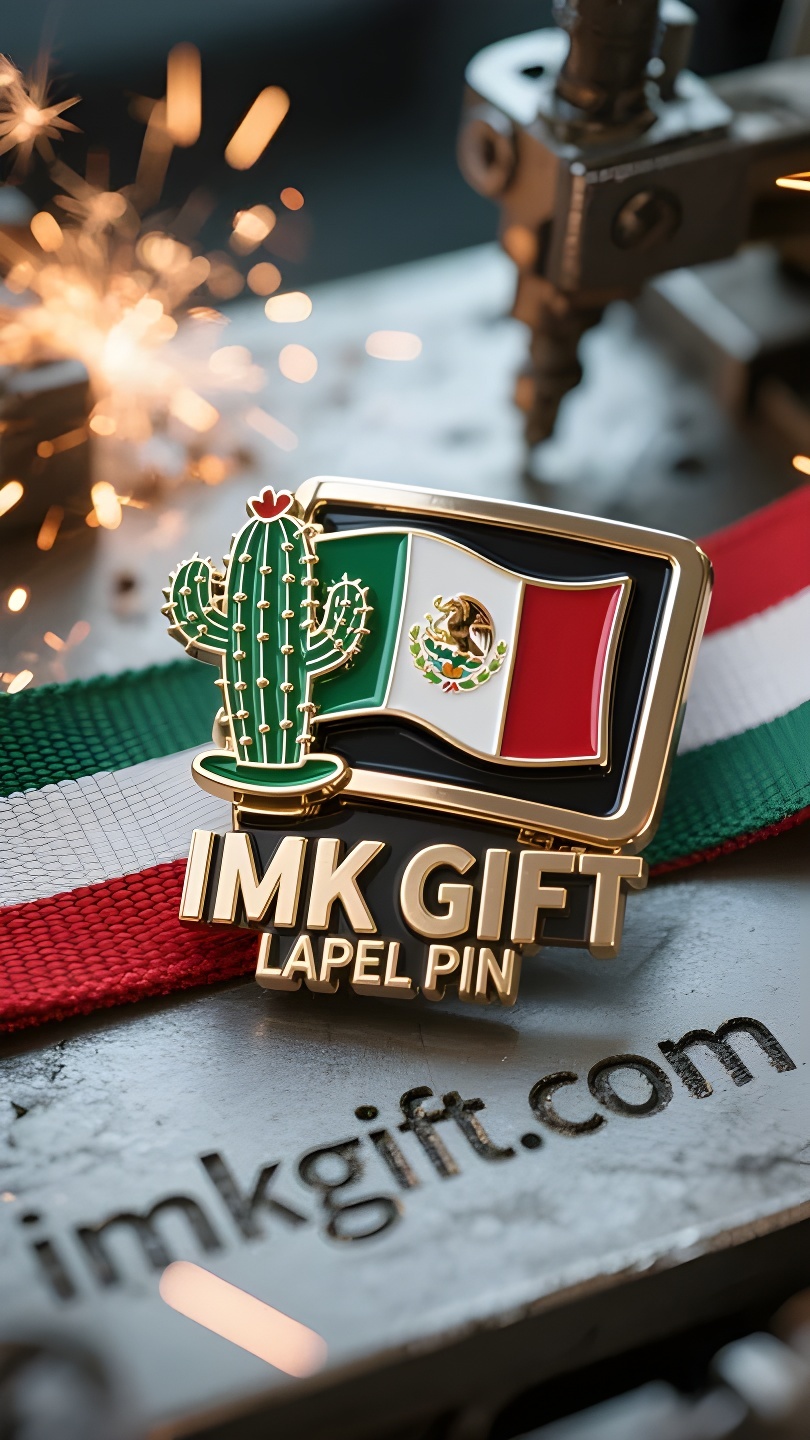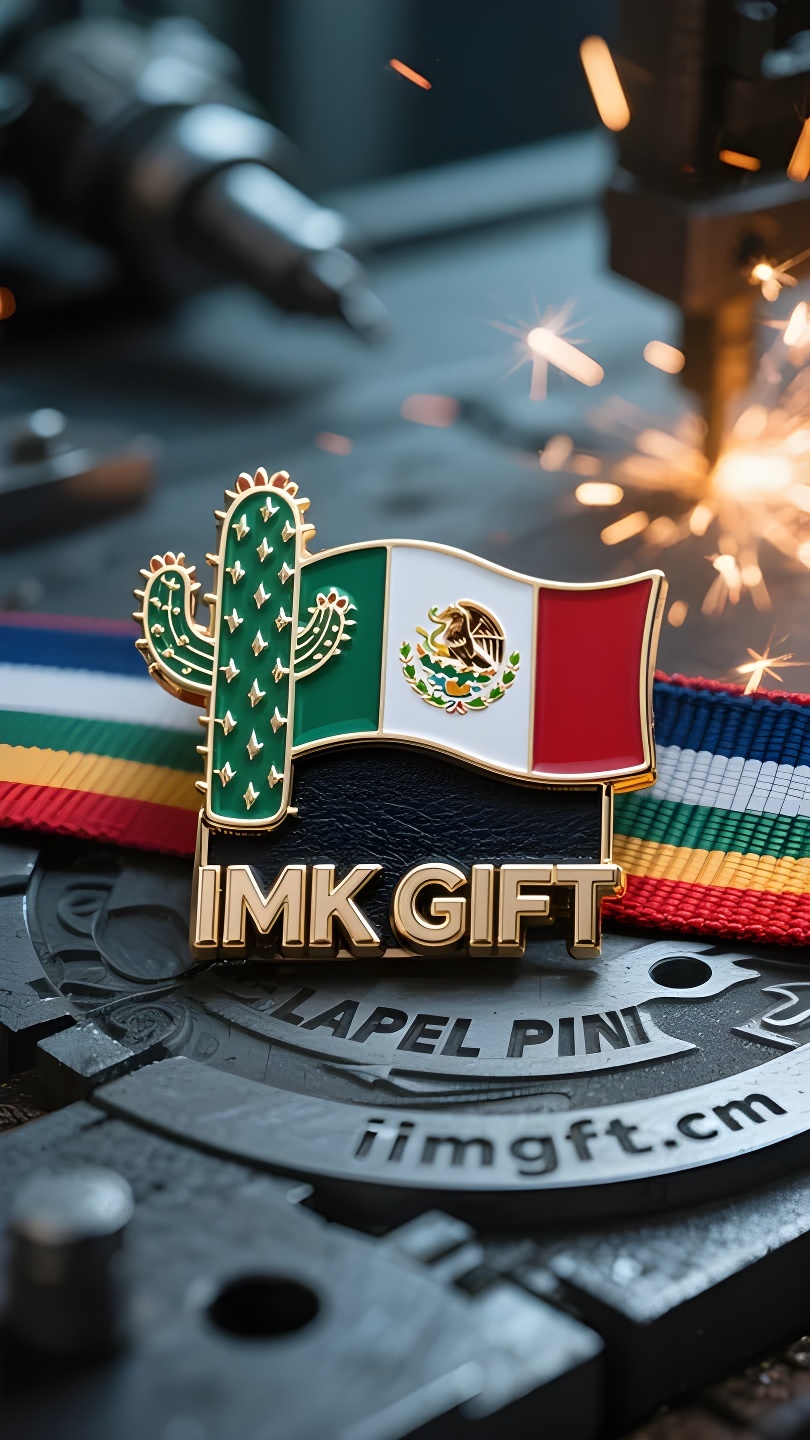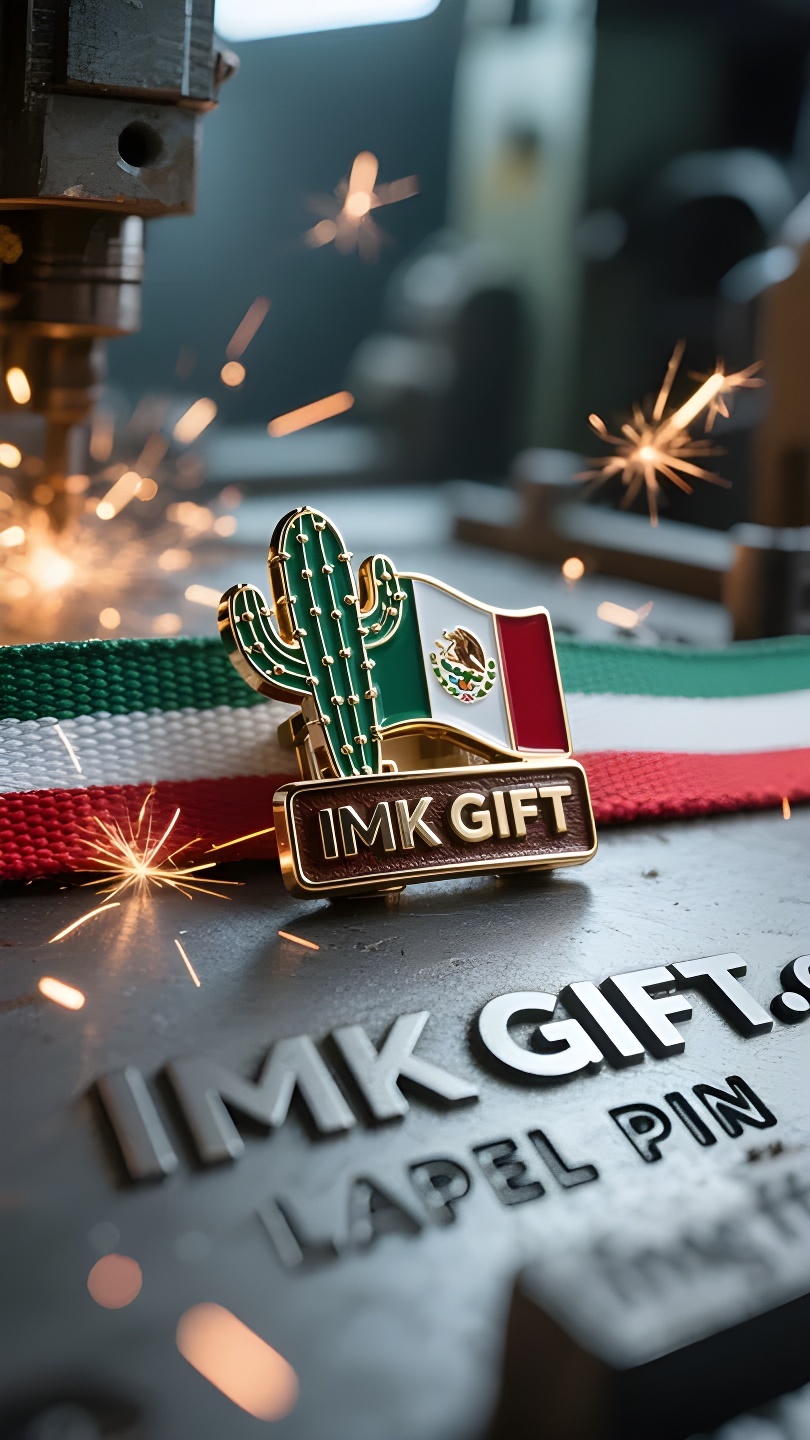in980-Medalla-de-Cactus-Blindada-con-espinas-Abrochada-con-fe
▼
En septiembre en México, los colores rojo, verde y blanco de la bandera nacional surgen en el carnaval del Día de la Independencia. Cuando la gente posa sus ojos en el cactus y el águila en el emblema nacional, siempre hay un símbolo cultural especial brillando alrededor de sus cinturas: el tótem del cactus en la hebilla tradicional del cinturón cuenta la filosofía de supervivencia de esta tierra de manera silenciosa. El cactus en el centro de la bandera mexicana lleva la leyenda de la búsqueda de la tierra prometida por los aztecas: el momento en que un águila se posa sobre el cactus sosteniendo una serpiente en su boca presagia el arraigamiento del espíritu nacional. Cuando los artesanos forjan esta planta para hacer hebillas de cinturón, le dan una metáfora más profunda: cada clavo de cobre es una marca dejada por el abrasador sol del desierto, y cada línea registra la lucha contra el suelo árido. Esta hebilla de metal no sólo ata el cuero, sino también la dignidad de los mexicanos de pie frente a la adversidad. En las calles de la moderna Ciudad de México, los jóvenes emprendedores llevan sus ancestrales hebillas de cactus alrededor de sus cinturas como una medalla de supervivencia. Cuando sus planes de negocios se topan con dudas como una tormenta de arena, y cuando las presiones económicas pican como un escorpión, acarician los dibujos de espinas en relieve de las hebillas de sus cinturones, recordando la sabiduría del cactus que puede almacenar rocío a temperaturas elevadas de 40 °C. Este tótem de metal es un recordatorio constante: el verdadero poder reside en transformar las afiladas espinas del destino en armaduras y nutrir manantiales dulces en lugares secos. Desde las pirámides de Teotihuacan hasta las modernas playas de Cancún, el tintineo de la hebilla de un cinturón de cactus sigue resonando. No es sólo un adorno de vestimenta, sino también una declaración fluida: los mexicanos han forjado el sufrimiento en medallas y sus raíces tenaces han penetrado todos los tiempos estériles. Cuando el mundo les pregunta por el secreto del éxito, golpean los tótems de metal que llevan alrededor de la cintura: la respuesta ha sido grabada desde hace mucho tiempo en el pacto milenario entre sus antepasados y el cactus.
In September in Mexico, the red, green and white colors on the national flag surge in the carnival of Independence Day. When people cast their eyes on the cactus and eagle in the national emblem, there is always a special cultural symbol shining on their waists – the cactus totem on the traditional belt buckle is telling the survival philosophy of this land in a silent manner. The cactus in the center of the Mexican flag carries the legend of the Aztecs looking for the promised land: the moment when the eagle stands on the cactus with a snake in its mouth, it foreshadows the rooting of the national spirit. When the craftsmen forged this plant into a belt buckle, they gave it a deeper metaphor – each copper nail is a mark of the scorching sun in the desert, and each line records the struggle against the barren soil. This metal buckle not only ties up the leather, but also ties up the dignity of Mexicans standing up in adversity. On the streets of modern Mexico City, young entrepreneurs pin their ancestral cactus belt buckles around their waists, as if wearing a medal of survival. When business plans are challenged like a sandstorm, and when economic pressure bites like a poisonous scorpion, they stroke the raised thorns on their belt buckles, remembering the wisdom of cacti that can store dew in 40℃ high temperatures. This metal totem is a constant reminder: true power lies in transforming the sharp thorns of fate into armor and nurturing springs in dry places. From the pyramids of Teotihuacan to the modern beaches of Cancun, the jingle of cactus belt buckles always echoes. It is not only an embellishment of clothing, but also a flowing declaration: Mexicans forge suffering into medals and penetrate all barren times with their tenacious roots. When the world asks for the secret of success, they tap the metal totem on their waists – the answer has long been engraved in the thousand-year covenant between their ancestors and cacti.
九月的墨西哥,国旗上的红绿白三色在独立日的狂欢中翻涌。当人们将目光投向国徽中的仙人掌与雄鹰时,总有一枚特殊的文化符号在腰间闪光——传统皮带扣上的仙人掌图腾,正以沉默的姿态讲述着这片土地的生存哲学。
墨西哥国旗中央的仙人掌,承载着阿兹特克人寻找应许之地的传说:雄鹰衔蛇立于仙人掌之上的瞬间,预示着民族精神的扎根。而工匠将这种植物锻造成皮带扣时,赋予了更深层的隐喻——每一道铜钉都是沙漠烈日的刻痕,每一条纹路都记录着与贫瘠土壤的抗争。这枚金属扣环不仅系住皮革,更系住了墨西哥人在逆境中挺立的尊严。
现代墨西哥城的街头,年轻创业者将祖传的仙人掌皮带扣别在腰间,如同佩戴一枚生存勋章。当创业计划遭遇沙暴般的质疑,当经济压力如毒蝎般蛰咬,他们抚摸皮带扣上凸起的荆棘纹路,想起仙人掌在40℃高温中依然贮存清露的智慧。这枚金属图腾时刻提醒着:真正的力量,在于将命运的利刺转化为护甲,在干涸处孕育甘泉。
从特奥蒂瓦坎金字塔到坎昆的现代海滩,仙人掌皮带扣的叮当声始终回响。它不仅是服饰的点缀,更是流动的宣言:墨西哥人将苦难锻造成勋章,用坚韧的根系穿透所有贫瘠的时代。当世界追问成功的秘诀,他们轻拍腰间的金属图腾——答案早已刻在祖先与仙人掌的千年盟约里。
▼
Contact Us
📞 Tel: +0086-760-85286839
📧 Email: sales3@imkgift.com








